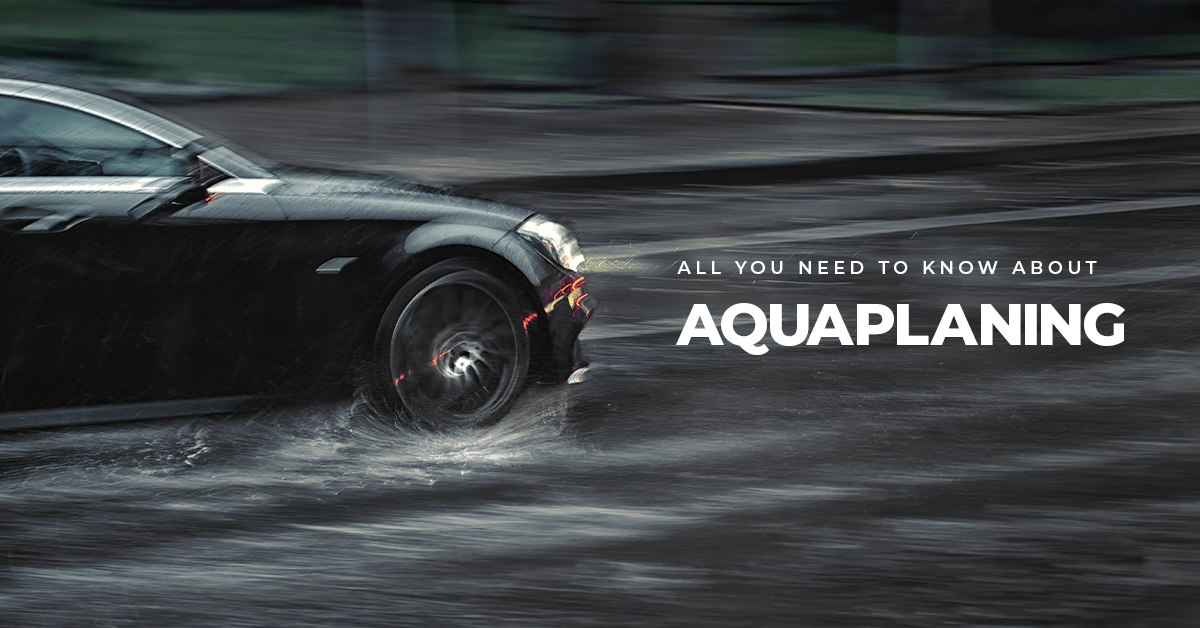Heavy rainfall can increase the chances of your vehicle aquaplaning - which can be stressful for any driver.
Read on and find out what aquaplaning is, the warning signs to look out for and what to do if you aquaplane in your car.
Page Contents
Aquaplaning Meaning
When the surface of the tyre and the road are separated by a layer of water, this is known as aquaplaning.
This can cause your tyres to lose traction, making it difficult to control your vehicle’s braking, steering and acceleration.
The grooves in your car’s tyre tread is there to eject water to help keep contact between the tyre and the road.
When too much water builds up around the tyres’ "contact patch", this can make driving in wet weather dangerous.
Is My Car Aquaplaning?
Your car may be aquaplaning if you notice any of the following:
- Your car is swerving or drifting
- Your car won’t respond to steering
- The brakes won’t respond well
- The steering wheel feels lighter
- The revs have increased
- The engine is suddenly louder
What to Do When Aquaplaning
If you think your car is aquaplaning, try and stay calm and avoid making any sudden inputs to the brakes or steering wheel.
Harsh braking and jerky steering wheel movements will just make things worse.
Begin to gently ease off the accelerator and turn off cruise control if your vehicle has it.
Drive with the car pointing straight and apply the brakes gradually once your car has regained grip so you can stay in control of the car.
What to Do When Aquaplaning Causes Skidding
If your vehicle skids due to aquaplaning, what you do will vary depending on the vehicle you drive.
Front-wheel Drive
If your vehicle is front-wheel drive, you should decelerate and steer in the opposite direction of the skid if necessary.
Rear-wheel Drive
If your vehicle is rear-wheel drive, you should accelerate and steer in the opposite direction of the skid if necessary.
Four-wheel Drive
If your vehicle is four-wheel drive, you should steer in the direction of the skid.
Once you’ve regained traction, you can steer the other way.
What Causes Aquaplaning?
Aquaplaning can occur if you drive during or after heavy rainfall and water is allowed to build up between the tyres and the road’s surface.
The risk of aquaplaning increases if you drive with old, damaged tyres with poor tread.
Less tread = less water being dispersed.
Your tyre tread depth should always be above the 1.6mm legal minimum – you should change your tyres once the tread reaches 3mm.
Aquaplaning is also more likely to happen if you drive at higher speeds.
How to Avoid Aquaplaning
To avoid aquaplaning, try and reduce your speed when you are approaching puddles or water sitting on the road’s surface.
Driving faster than you need to will only increase the chances of an accident.
Look far ahead to try and anticipate any large puddles that could cause aquaplaning.
Ensuring your tyres have sufficient tyre tread, clean headlights and working windscreen wipers is essential if you want to avoid aquaplaning.
At What Speed Do You Aquaplane?
Whilst there is no specific speed at which you can avoid aquaplaning, vehicles travelling at 30mph in a couple inches of water may be able to keep traction.
Once your vehicle reaches 50mph in a couple inches of water, it will be difficult to avoid aquaplaning.
Is Aquaplaning Dangerous?
Aquaplaning is dangerous as it can lead to a complete loss of control over the vehicle, making collisions more likely.
That’s why it’s so important that you drive sensibly and have your tyres checked regularly and replaced when required by a professional mechanic.
FAQs








No comments yet
Leave a comment